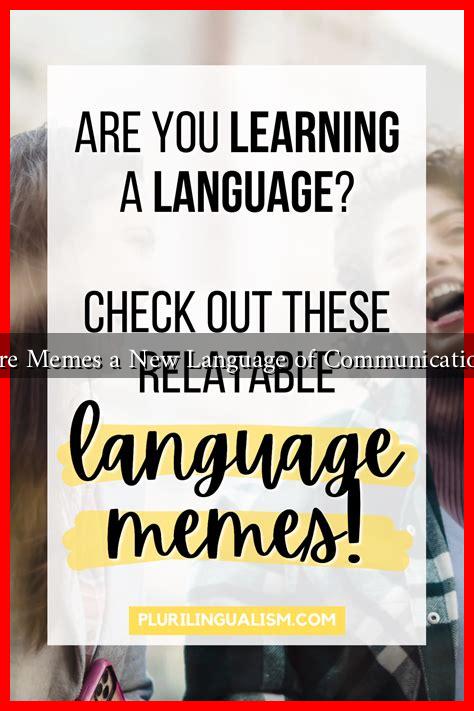-
Table of Contents
Are Memes a New Language of Communication?
In the digital age, communication has evolved dramatically, with memes emerging as a significant form of expression. These humorous images, videos, or text that are spread rapidly online have transcended traditional language barriers, creating a unique form of communication that resonates with diverse audiences. But are memes truly a new language? This article explores the characteristics of memes, their impact on communication, and their role in shaping modern discourse.
The Anatomy of Memes
Memes are not just random images with captions; they possess distinct characteristics that make them a unique form of communication. Here are some key elements:
- Visual Appeal: Memes often rely on striking visuals that capture attention quickly.
- Relatability: They often reflect shared experiences or cultural references, making them relatable to specific audiences.
- Humor: Most memes incorporate humor, which can facilitate engagement and sharing.
- Adaptability: Memes can be easily modified, allowing users to create variations that suit different contexts.
Memes as a Language
While memes may not constitute a formal language, they exhibit many characteristics of linguistic communication. Here’s how:
- Symbolism: Just like words, memes use symbols (images, text) to convey meaning. For instance, the “Distracted Boyfriend” meme symbolizes the struggle of choosing between two options.
- Contextual Meaning: The meaning of a meme can change based on context, similar to how words can have different meanings in different situations.
- Shared Understanding: Memes often rely on a shared cultural context, akin to idioms or slang in spoken language.
The Impact of Memes on Communication
Memes have transformed how we communicate, particularly among younger generations. Here are some notable impacts:
- Speed of Communication: Memes can convey complex ideas quickly, often in a matter of seconds. This rapid dissemination is particularly effective in social media environments.
- Global Reach: Memes can cross cultural and linguistic boundaries, allowing for a universal form of communication. For example, the “Woman Yelling at a Cat” meme has been adapted in various languages and cultures.
- Political Discourse: Memes have become a tool for political expression, often used to critique or satirize political figures and policies. The 2016 U.S. presidential election saw a surge in political memes that influenced public opinion.
Case Studies: Memes in Action
Several case studies illustrate the power of memes in communication:
- “Pepe the Frog”: Originally a harmless cartoon character, Pepe became a symbol in various online communities, illustrating how memes can evolve and take on new meanings.
- “This Is Fine”: This meme, depicting a dog in a burning room, has been used to comment on various crises, from personal issues to global events, showcasing its versatility in conveying feelings of denial or acceptance.
Statistics on Meme Usage
According to a study by the Pew Research Center, approximately 55% of U.S. adults have seen memes, with 25% actively sharing them. This statistic highlights the widespread acceptance and use of memes as a communication tool.
Conclusion: The Future of Memes as a Language
In conclusion, while memes may not fit the traditional definition of a language, they serve as a powerful form of communication that transcends barriers. Their ability to convey complex ideas quickly and humorously makes them an essential part of modern discourse. As digital communication continues to evolve, memes are likely to play an increasingly significant role in how we express ourselves and connect with others. Understanding this new form of communication is crucial for navigating the complexities of the digital world.
For further reading on the impact of memes in communication, you can explore resources from Pew Research Center.


